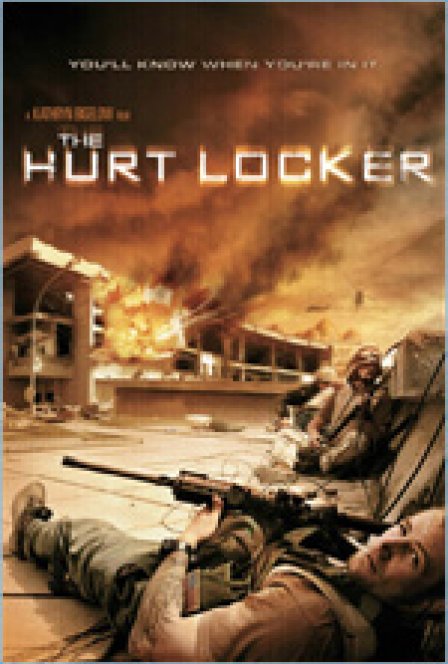Critics have already devoted enough print to discussing the failure of Iraq War-themed movies; there is no need to rehash the various arguments here. Suffice to say, no director has succeeded in crafting the definitive narrative, one that offers the viewer a glimpse of the full scope of wartime experience. And, as cynically minded contemporary moviegoers, we become more increasingly jaded with each attempt. Perhaps this is how Kathryn Bigelow's The Hurt Locker begins to separate itself from other films: Bigelow consciously chooses not to make it her mission to explain the war or speculate on the average soldier's experience, but instead to convey the very specific stories of a unit of Explosive Ordinance Disposal (EOD) technicians. More than a film about the Iraq War, The Hurt Locker is a character study of those who choose to do the war's most dangerous job.
The Hurt Locker follows the exploits of Bravo Unit, an Army EOD squad operating in Baghdad. Staff Sgt. James (Jeremy Renner) joins the unit after his predecessor (Guy Pearce) is killed in action (or, in EOD slang, sent to “the hurt locker}” -- although the title's origin is not explained in the film). James is the unit's technical specialist, the man who actually defuses improvised explosive devices (IEDs). His freewheeling operating style immediately brings him into conflict with Sgt. Sanborn (Anthony Mackie), whose background is military intelligence. The third member of the unit, Specialist Eldridge (Brian Geraghy), finds himself caught in between the two.
As a filmmaker, Bigelow is best known for her genre-bending cult classics: the horror Western Near Dark, the surfing/undercover cop thriller Point Break, and the revisionist cyberpunk film Strange Days. Although The Hurt Locker may seem a far cry from her prior films, Bigelow skillfully incorporates elements from all three. With the bleak desert landscapes (Jordan serves as a stand-in for Iraq) and gunfights, Bigelow infuses this film with the Western overtones she so skillfully weaved into Near Dark. In a scene that could be borrowed from any John Wayne picture, Bravo Unit encounters a group of British contractors, i.e. bounty hunters, holding prisoners recognizable from the Bush administration's “most wanted” deck of cards (remember that?), with a broken-down convoy. The soldiers soon find themselves under attack by insurgents, Bigelow's substitutes for the Apaches and Commanches. This is the new Wild West, but without a genre film's easy moral clarity. When the lead contractor (Ralph Fiennes) reminds the unit that they're all “on the same side,” we cannot help but wonder about the divide between these profiteers and volunteers such as James, Sanborn, and Eldridge.
Just as in Point Break, Bigelow take as her subject men who thrive close to danger. While James may not be quite the caricature of Patrick Swayze's Bodhi or Keanu Reeves's Johnny Utah, Bigelow makes clear that there is something similar in his character that seeks out the danger he encounters. And as Strange Days dealt with technology's rapid advancement in the 1990s, Bigelow does not ignore the impact of technology in this war. The film's opening shot tracks a remote-control robot as it makes its way toward an IED. Commenting on James's box of defused bomb parts, Sanborn exclaims that it is "shit from Radio Shack."
But The Hurt Locker still manages to feel authentic, despite these forays into genres from Bigelow's past. Working with journalist/screenwriter Mark Boal, who spent time embedded in an Army EOD squad and also co-wrote another Iraq War film, Paul Haggis's In the Valley of Elah, Bigelow stays close to the real lives of soldiers who place themselves well within the blast range of homemade explosives. This is neo-realism, but a high-tech, stylized version of it -- and that makes The Hurt Locker much like the Iraq War itself.

